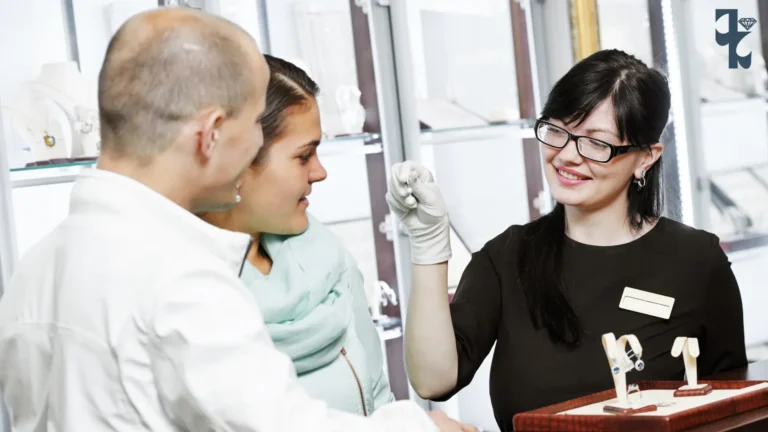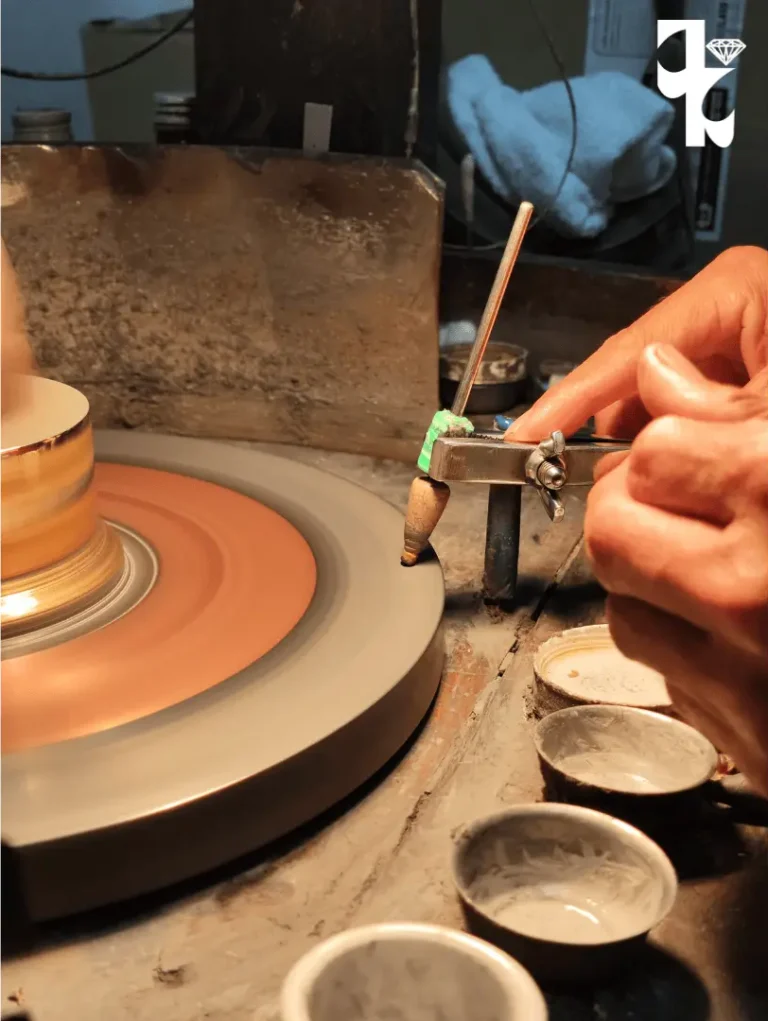Technological Leaps in Jewelry
Life was simpler when Apple and Blackberry were just fruits.
However in the 21st century, it is impossible to envision a world without technology. From the moment we wake up to the time we fall asleep, we are constantly interacting and engaging with technology. Technology has played a crucial role in development of various fields such as science, governance, manufacturing, retail etc. When the world is hopping on to the bandwagon of technological advancements, the jewellery sector too found its place in the dynamic and progressive world of technology. The jewellery industry has been embracing the use of cutting-edge technology to create the best designs and products for customers while creating opportunities for jewellers and business owners to carry out efficient trade. Here are some of them:
Computer Aided Design
The more complex a piece of jewellery is, the harder it is to design. Computer-Aided Design (CAD) software is used to design much of today’s jewellery. It allows designers to work quickly and easily create multiple iterations of a design. It also allows them to ‘cut and paste’ motifs across projects instead of drawing every time.
CAD also provides designers with the space to experiment using trial and error, which is not possible with hand drawn designs. Another way it helps designers is that, using CAD, one can zoom into the design to add details to small areas of the jewellery piece.
Customizing jewellery for potential customers has also become possible with CAD. It is easier and more affordable to create designs while collaborating with customers on how the final product should look like. It helps clients to picture what their purchase will look like without having to resort to pricy molds and other techniques.
If you’re interested in learning CAD for jewellery design, you can sign up for our course here (CAD Jewelry Design Courses | CAD Jewelry Designing Courses in Mumbai (jkdiamondsinstitute.com)

Computer-Aided Manufacturing and 3D printing
Earlier, manufacturers used to make rubber or wax molds of the original master model before producing the final product. If some variations were needed on the molds, they had to create a new model from scratch. But today, using CAD software, variations can be made on an existing model and a new model can be printed on demand on a Computer-Aided Manufacturing (CAM) machine, such as 3D printers.
The demand for 3D printing technology is growing in leaps and bounds in jewellery manufacturing and retail. More and more sellers are offering clients the opportunity to completely custom design and manufacture jewellery, allowing manufacturers to save labour and costs. There is greater quality control as well. Be it a pearl necklace, an engagement ring or a fancy brooch, you can create your very own 3D printed jewellery now!

Using AI to grade diamonds
With technology quickly penetrating almost every nook and corner of our lives, it is not a surprise that artificial intelligence-based (AI) grading technologies are being used to avoid an undesirable array of inaccuracies. Grading diamonds with the human eye is not free of erring, which makes standardized grading a utopia. This is where AI comes in. Using AI grading for diamonds, it increases consumer confidence as customers know that their diamonds have been objectively graded, and is free of human error.
We also offer courses in diamond grading. You can check them out here: Diamond Grading Courses | Learn Diamond Grading Offline (jkdiamondsinstitute.com)

Laser sintering
An expensive technology but laser sintering can be the next biggest thing in jewellery manufacturing. Basically, it involves taking powdered metal (gold, silver, platinum etc.) and using a laser to sinter (melt) it layer by layer. Any shape can then be drawn with the laser in three dimensions.
While this technology is still being developed, it has the potential to eliminate the need for a wax model or mold to be created before a piece of jewellery can be cast. This also means that one can go from a CAD model to the finished product in less time with a few mouse clicks. What’s more, each piece can be customized to the client’s needs and desires.
Smart jewellery
We have smart refrigerators, smart washing machines in our homes and smart watches on our wrists but it is time to combine fashion and technology and herald the advent of: smart jewellery! That brooch you wear daily could actually be a health tracker giving you an accurate picture of your heart rate, blood pressure, the distance you walked for – all at a moment’s touch.
For some time now, bangles and bracelets have existed as iterations of smart jewellery in the market. The latest is the invention of the smart ring, which is worn on the finger like any other ring but it collects health-related data which the user can later review on a smartphone. Imagine wearing earrings that give you all health-related information while ensuring you look fashionable!
Apart from health, smart jewellery such as rings and pendants can act as hands-free devices which help screen incoming calls, messages, emails, give important alerts and notifications etc. There are some smart bracelets that are specifically aimed at ensuring safety. Such luxury jewellery designs could have an emergency button on it which can send alerts if help is needed. It can also be equipped with GPS to direct help to the person.

Augmented Reality in retail
When people go to jewellery shops, they are looking for that luxury item that fits them perfectly and looks perfect on them. An intrinsic part of that experience is being able to touch the jewellery product, see it up close in all its minutiae and try it on to see how it looks on you. It is hard to make people buy jewellery online without these parameters. This is where use of Augmented Reality (AR) has been a boon to jewellery sellers, especially in this pandemic.
AR in the jewellery industry allows people to shop from the comfort of their homes and choose their perfect piece from thousands of designs. Using AR can also help the jewellery retail space operate digitally. Customers can get the exact size and actually see how they look wearing the jewellery without physically visiting a store. AR apps can detect hands, ears, necks etc where the virtual piece of jewellery is to be placed and give you a clear picture of how you would look at it. Using this technology will help increase user interaction and engagement as well. In India, some jewellery stores have AR featured in the actual store as well for customers who don’t want to sit through the entire process of trying on jewellery and then choosing it.
Use of AR in jewellery design and production has potential to be a game-changer, where the designer and customer can sit in different locations yet make changes to design in real time, thereby encouraging a collaborative engagement between the two.

Social media and tracking tools
Social media marketing today plays a crucial role in reeling in customers for businesses, including those in the jewellery industry. Most of the population in the world lives on social media platforms like Instagram, Facebook, Pinterest etc. Jewellery sellers are moving into this space to attract more customers, provide product descriptions, interact with potential customers etc.
An essential component of selling jewellery is analyzing customer data and behaviour. A lot of retailers invest in systems like Google Analytics to understand what customers are looking for, the keywords they are searching for etc.
Keeping up-to-date with today’s technological trends in jewelry is crucial to staying current and relevant in the industry. Keep watching this space for more insight on the trends of the jewelry industry!




